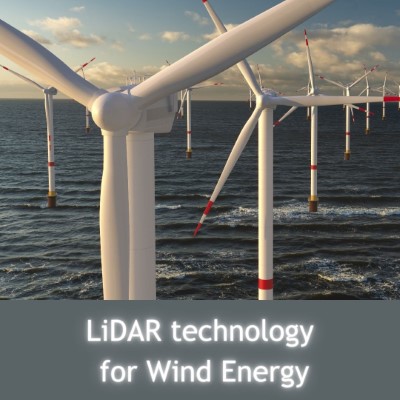Lidar Experiments for Wind Energy involve using Light Detection and Ranging (Lidar) technology to measure wind characteristics, which can enhance the efficiency and effectiveness of wind energy production. Lidar uses laser pulses to detect and map objects, including wind patterns and speeds. Here’s an overview of how it is applied in wind energy:
Key Components of Lidar in Wind Energy:
- Measurement of Wind Speed and Direction:
- Lidar systems emit laser pulses into the atmosphere and measure the backscattered light from particles in the air.
- By analyzing the Doppler shift in the backscattered light, Lidar can determine wind speed and direction at various heights and distances from the device.
- Types of Lidar Systems:
- Ground-based Lidar: Placed on the ground to measure wind profiles at different heights above the ground.
- Nacelle-based Lidar: Mounted on wind turbine nacelles to measure wind approaching the turbine blades.
- Offshore Lidar: Deployed on floating platforms or buoys to measure wind conditions over the ocean.
- Applications in Wind Energy:
- Site Assessment: Evaluating potential sites for wind farms by measuring wind speed and direction over extended periods.
- Turbine Control: Providing real-time wind data to optimize turbine operations and improve efficiency.
- Resource Assessment: Estimating the wind resource potential of a site to predict energy production and inform investment decisions.
- Performance Monitoring: Continuously monitoring wind conditions to assess and enhance turbine performance.
- Advantages of Using Lidar:
- Non-intrusive Measurement: Lidar can measure wind conditions without physically interacting with the air or environment.
- High Spatial and Temporal Resolution: Provides detailed wind profiles and rapid data acquisition.
- Flexibility and Mobility: Lidar systems can be easily relocated to different sites or positions.
- Challenges and Considerations:
- Cost: Lidar systems can be expensive to purchase and maintain.
- Complexity: Requires skilled personnel to operate and interpret the data.
- Data Quality: Factors like atmospheric conditions and particulate matter can affect measurement accuracy.
Benefits for Wind Energy Projects:
- Improved Wind Farm Design: Detailed wind profiles help in optimizing the layout and design of wind farms.
- Enhanced Energy Output: By adjusting turbine operations based on real-time wind data, energy output can be maximized.
- Reduced Operational Costs: Predictive maintenance and better turbine control can reduce wear and tear, lowering maintenance costs.
Overall, Lidar technology provides a sophisticated means of enhancing the efficiency, effectiveness, and economic viability of wind energy projects through precise and comprehensive wind measurement.
